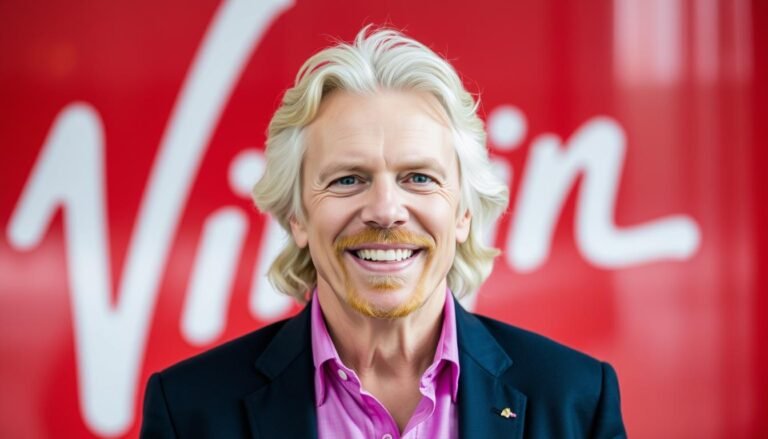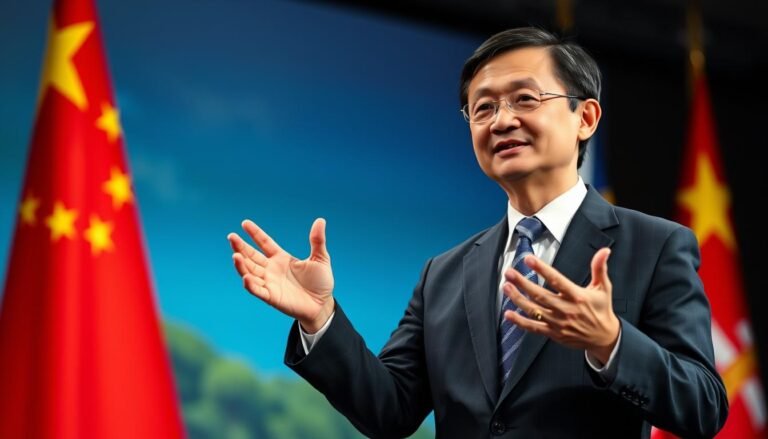Warren Buffett – The Oracle of Omaha
Few names in the financial world command as much respect and admiration as Warren Buffett. Known as the “Oracle of Omaha,” Buffett has transformed from a curious, entrepreneurial child into one of history’s most successful investors with a fortune exceeding $100 billion. His remarkable journey, built on patience, discipline, and an unwavering commitment to value investing principles, offers timeless wisdom for investors at every level. Beyond his financial achievements, Buffett’s legacy extends to his philanthropic commitments and straightforward business philosophy that continues to influence global markets decades after he began his investing career.
Early Life and Investment Beginnings
Born on August 30, 1930, in Omaha, Nebraska, Warren Edward Buffett showed remarkable business acumen from an early age. The son of a stockbroker-turned-congressman, Buffett was introduced to the world of investing before he was even a teenager. His childhood was marked by an unusual fascination with numbers and business opportunities that set the foundation for his future success.

At just six years old, Buffett began his first business ventures, selling chewing gum door-to-door in his neighborhood. By age 11, he purchased his first stock – three shares of Cities Service Preferred for $38 per share. Though he sold them when they reached $40, the price later climbed to $200, teaching young Buffett an early lesson about the value of patience in investing.
His entrepreneurial spirit continued to flourish throughout his youth. At age 13, he worked as a paperboy, delivering The Washington Post. He filed his first tax return at 14, deducting his bicycle as a business expense. By the time he graduated high school, Buffett had accumulated the equivalent of nearly $100,000 in today’s dollars from various business ventures.
The Benjamin Graham Influence
Buffett’s investment philosophy was profoundly shaped by Benjamin Graham, often called the father of value investing. After reading Graham’s book “The Intelligent Investor” at age 19, Buffett described it as “the best book about investing ever written.” He later studied under Graham at Columbia University, where he earned his Master’s degree in economics.
“The best investment you can make is an investment in yourself… The more you learn, the more you’ll earn.”
Graham’s mentorship provided Buffett with the intellectual framework that would guide his investment decisions for decades to come. The core principle was simple yet revolutionary: view stocks not as ticker symbols but as ownership interests in actual businesses. This perspective, combined with Graham’s concept of “margin of safety,” became central to Buffett’s approach.

After working for Graham’s investment firm in New York, Buffett returned to Omaha in 1956 and started his own investment partnership with $100,000 raised from family and friends. Between 1956 and 1969, the Buffett Partnership delivered an average annual return of 29.5%, significantly outperforming the market and laying the groundwork for his legendary investment career.
Core Investment Philosophy
Warren Buffett’s investment approach, while often described simply as “value investing,” encompasses a sophisticated framework built on several fundamental principles. At its heart lies a commitment to understanding the intrinsic value of businesses rather than speculating on market movements.

The Value Investing Approach
Buffett’s value investing strategy involves identifying companies trading below their intrinsic value – essentially finding dollar bills selling for 50 cents. Unlike many investors who chase market trends, Buffett focuses on the fundamental economics of businesses, seeking companies with strong competitive advantages, consistent earnings, and capable management teams.
Buffett famously avoids investing in businesses he doesn’t understand, which led him to largely avoid technology stocks during the dot-com bubble of the late 1990s. While this decision was criticized at the time, it ultimately protected Berkshire Hathaway from significant losses when the bubble burst.
“Price is what you pay. Value is what you get.”
The “Buy and Hold” Strategy
Perhaps the most distinctive aspect of Buffett’s approach is his extraordinary patience. While many investors trade frequently in response to market fluctuations, Buffett famously stated that his favorite holding period is “forever.” This long-term perspective allows him to look past short-term market volatility and focus on the underlying business performance.

Buffett’s commitment to long-term investing is exemplified by his major holdings. He first purchased shares of Coca-Cola in 1988 and American Express in 1963, and both remain core Berkshire Hathaway investments today. This approach minimizes transaction costs and tax liabilities while allowing investments to compound over decades.
The “buy and hold” strategy also reflects Buffett’s view that market timing is largely futile. Rather than trying to predict market movements, he focuses on identifying great businesses at reasonable prices and holding them through market cycles. As he famously advised, “Be fearful when others are greedy, and greedy when others are fearful.”
The Berkshire Hathaway Era
In 1965, Buffett made what would become his defining business move – taking control of Berkshire Hathaway, a struggling textile manufacturer. What began as a troubled textile business would transform under Buffett’s leadership into one of the world’s largest conglomerates with a market capitalization exceeding $700 billion.

Key Acquisitions and Investments
Buffett’s strategy with Berkshire involved using the cash flow from the company’s operations to acquire other businesses entirely or purchase significant stakes in publicly traded companies. Some of his most notable acquisitions include:
Under Buffett’s leadership, Berkshire Hathaway has delivered an average annual return of 20% since 1965, compared to about 10% for the S&P 500 over the same period. This remarkable outperformance has created enormous wealth for Berkshire shareholders who embraced Buffett’s long-term approach.

The Legendary Shareholder Letters
Since 1965, Buffett has written an annual letter to Berkshire Hathaway shareholders that has become required reading for investors worldwide. These letters, known for their clarity, wit, and investment wisdom, offer insights into Buffett’s thinking and Berkshire’s performance.
The shareholder letters cover topics ranging from specific investment decisions to broader economic principles, all explained in Buffett’s characteristic plain-spoken style. They avoid financial jargon in favor of clear explanations that even non-experts can understand, reflecting Buffett’s belief that investing shouldn’t be overly complicated.
“It’s far better to buy a wonderful company at a fair price than a fair company at a wonderful price.”
Beyond their educational value, the letters serve as a model of corporate transparency. Buffett candidly discusses both successes and mistakes, setting a standard for honest communication with shareholders that few executives match. This transparency has helped build the extraordinary trust that Berkshire investors place in Buffett’s leadership.
Philanthropic Efforts
Despite his immense wealth, Warren Buffett has maintained a relatively modest lifestyle, living in the same Omaha home he purchased in 1958 for $31,500. His approach to wealth has always been pragmatic, viewing money as a scorecard rather than a means to fund lavish consumption. This philosophy extends to his approach to philanthropy, where Buffett has pledged to give away 99% of his fortune.

The Gates Foundation Partnership
In 2006, Buffett announced an unprecedented philanthropic commitment, pledging to donate 85% of his Berkshire Hathaway stock to five foundations, with the largest portion going to the Bill & Melinda Gates Foundation. This pledge, valued at approximately $37 billion at the time, represented the largest charitable donation in United States history.
Buffett’s partnership with the Gates Foundation was based on his belief in their effectiveness and shared vision. Rather than creating his own foundation, Buffett chose to contribute to an existing organization with proven capabilities in addressing global health challenges, improving education, and reducing extreme poverty.

The Giving Pledge
In 2010, Buffett and the Gates family launched The Giving Pledge, an initiative encouraging the world’s wealthiest individuals to commit the majority of their wealth to philanthropy. The pledge is a moral commitment rather than a legal contract, asking signatories to give away at least half of their wealth during their lifetime or in their will.
Since its inception, The Giving Pledge has attracted over 200 signatories from 25 countries, including notable figures such as Mark Zuckerberg, Elon Musk, and MacKenzie Scott. This movement has helped normalize the expectation that extraordinary wealth comes with a responsibility to give back to society.
Buffett’s approach to philanthropy reflects the same thoughtful analysis he applies to investing. He focuses on maximizing the impact of his giving by supporting organizations with strong leadership, clear missions, and the ability to scale solutions to major global challenges.
Timeless Lessons for Investors
Warren Buffett’s six decades of investment success have yielded numerous lessons that investors of all experience levels can apply. While his specific investment decisions are shaped by his unique skills and resources, his core principles are accessible to anyone willing to adopt a disciplined, long-term approach.

1. Invest Within Your Circle of Competence
Buffett consistently emphasizes the importance of investing in businesses you understand. This “circle of competence” concept encourages investors to recognize the boundaries of their knowledge and stay within them rather than speculating in unfamiliar territories.
For individual investors, this might mean focusing on industries related to their professional experience or personal interests. The key is honest self-assessment about what you truly understand versus where you might be vulnerable to overlooking critical factors.

2. Focus on Value, Not Price Movements
Perhaps Buffett’s most fundamental lesson is to evaluate investments based on their intrinsic business value rather than short-term price fluctuations. This approach requires looking beyond quarterly earnings reports to understand a company’s competitive position, growth prospects, and long-term economics.
For everyday investors, this means resisting the temptation to trade based on market noise or short-term volatility. Instead, Buffett advocates developing the ability to calculate approximate intrinsic values and purchasing stocks only when they trade at a significant discount to those values.
3. Patience and Emotional Discipline
Buffett’s temperament may be his greatest investment advantage. While markets are driven by fear and greed, he maintains remarkable emotional discipline, waiting patiently for the right opportunities and avoiding impulsive decisions during market extremes.

This patience extends to holding investments through market downturns. As Buffett famously noted, “The stock market is a device for transferring money from the impatient to the patient.” For individual investors, developing this emotional discipline may be more important than any specific analytical skill.
Legacy and Influence on Modern Finance
Warren Buffett’s impact extends far beyond his personal investment success or the growth of Berkshire Hathaway. His approach to business and investing has influenced generations of investors, executives, and financial professionals, reshaping how many think about markets, corporate governance, and wealth itself.

Reshaping Investment Culture
Buffett has been a powerful counterweight to speculative investment trends throughout his career. While Wall Street often promotes complex strategies and frequent trading, Buffett’s success with simple, long-term value investing has provided an alternative model that many individual investors have embraced.
His emphasis on thinking like a business owner rather than a stock trader has helped countless investors develop a more fundamental approach to evaluating companies. This perspective shift – from seeing stocks as electronic tickers to viewing them as partial ownership in real businesses – represents one of Buffett’s most significant contributions to investment culture.

Corporate Leadership Standards
As a major corporate leader, Buffett has modeled a distinctive approach to business management and governance. His emphasis on decentralized operations, long-term thinking, and straightforward communication stands in contrast to the bureaucratic structures and short-term focus of many large corporations.
Berkshire Hathaway’s corporate culture, shaped by Buffett’s leadership, has become a case study in effective governance. His annual letters have educated generations of business leaders on topics ranging from capital allocation to corporate ethics, establishing higher standards for how executives communicate with shareholders.
Key Achievements and Milestones
As Buffett approaches his ninth decade, his legacy continues to evolve. The succession plan at Berkshire Hathaway, with Greg Abel named as his eventual replacement as CEO, ensures that the company will continue beyond Buffett’s leadership. Yet his investment principles and ethical approach to business will influence markets for generations to come.

Conclusion: The Enduring Wisdom of Warren Buffett
Warren Buffett’s journey from a curious Nebraska boy to one of history’s most successful investors offers timeless lessons that transcend the world of finance. His story reminds us that extraordinary success often comes not from complex strategies or privileged access, but from applying fundamental principles with uncommon discipline and patience.
What makes Buffett truly remarkable is not just his investment performance, but how he achieved it – through ethical business practices, clear thinking, and a genuine passion for the process of allocating capital. In an industry often characterized by short-term thinking and excessive complexity, Buffett has demonstrated the enduring power of simplicity and long-term perspective.
As investors and business leaders continue to study Buffett’s methods, his greatest legacy may be showing that sustainable success comes from aligning financial decisions with deeper values – integrity, rationality, and a genuine concern for creating lasting value rather than ephemeral gains.

Master Value Investing with Buffett’s Principles
Want to apply Warren Buffett’s timeless investment wisdom to your own financial journey? Join our free newsletter for weekly insights on value investing strategies, market analysis, and lessons drawn from Buffett’s six decades of investment success.







